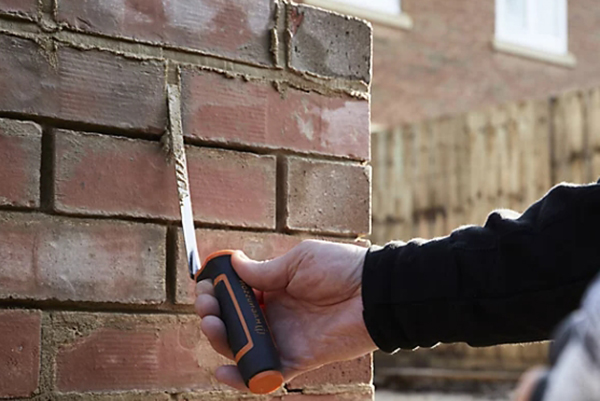Tuckpointing is a specialized masonry technique used to repair or finish the mortar joints between bricks or stones. Over time, weather and age can cause mortar to crack, deteriorate, or fall out entirely. Tuckpointing restores both the strength and appearance of a wall by removing old mortar and applying new, clean lines. Central to this process is the tuckpointing tool, a simple yet essential hand tool used by masons and bricklayers.
But what exactly is a tuckpointing tool, and how is it used?
Definition of a Tuckpointing Tool
A tuckpointing tool—sometimes called a tuck pointer or joint filler—is a narrow, flat, and often pointed tool made from hardened steel. It is designed to push mortar into joints between bricks, blocks, or stones during masonry work. The tool gets its name from the method of “tucking” mortar neatly into these narrow spaces to form clean, straight lines.
Tuckpointing tools are typically small, allowing for precision work in tight or shallow mortar joints. They come in a range of widths, usually between 1/8 inch and 1/2 inch, depending on the size of the joint being worked on.

Purpose and Use in Masonry
The main function of a tuckpointing tool is to apply mortar smoothly and evenly into joints after the old, damaged mortar has been removed. This step is part of the larger tuckpointing or repointing process, which involves the following stages:
-
Mortar Removal – Old mortar is ground or chipped away using an angle grinder or chisel.
-
Cleaning the Joints – Joints are brushed clean and sometimes wetted slightly to help the new mortar adhere.
-
Tucking New Mortar – Using a tuckpointing tool, new mortar is packed into the cleaned joints.
-
Shaping the Mortar – A jointer or pointing tool may be used afterward to smooth and shape the mortar for a uniform finish.
The tuckpointing tool ensures that mortar is compacted properly and reaches all areas of the joint, which is crucial for the strength and weather resistance of the wall.
Types of Tuckpointing Tools
There are several variations of tuckpointing tools, each suited to different tasks:
-
Flat Tuckpointing Tool: The most common type, with a flat blade ideal for general-purpose joint filling.
-
Pointed Tuckpointer: Comes to a narrow point, useful for very thin or hard-to-reach joints.
-
Double Tuckpointer: Has two blades or edges to apply two lines of mortar simultaneously, used in decorative work.
-
Powered Tuckpointing Tools: For large-scale jobs, power tools with tuckpointing attachments can be used to speed up the process, though hand tools are still preferred for precision.
Materials and Durability
High-quality tuckpointing tools are made of tempered steel or stainless steel, which resists bending, chipping, and rust. The handle is often made from wood, plastic, or rubber, designed for comfort and grip during repetitive use. Since tuckpointing often involves working in dusty or damp environments, the durability of the tool is essential.
Importance in Masonry Repair
Tuckpointing tools play a critical role in structural maintenance and aesthetic restoration. Properly filled mortar joints prevent water from entering the wall, which can cause internal damage, mold, or even structural failure. Visually, tuckpointing can revive the appearance of old brickwork, making it look new and polished.
In heritage buildings, skilled masons use tuckpointing tools to recreate traditional joint lines with contrasting colors, mimicking fine brickwork at a fraction of the cost.
Conclusion
A tuckpointing tool may appear small and unassuming, but it is a vital instrument in the world of masonry. By allowing masons to carefully insert and compact new mortar into brick or stone joints, it ensures both the longevity and beauty of masonry structures. Whether you’re a professional bricklayer or a homeowner tackling a repair job, understanding and using the right tuckpointing tool can make all the difference in achieving lasting, professional results.
Post time: Jul-17-2025






